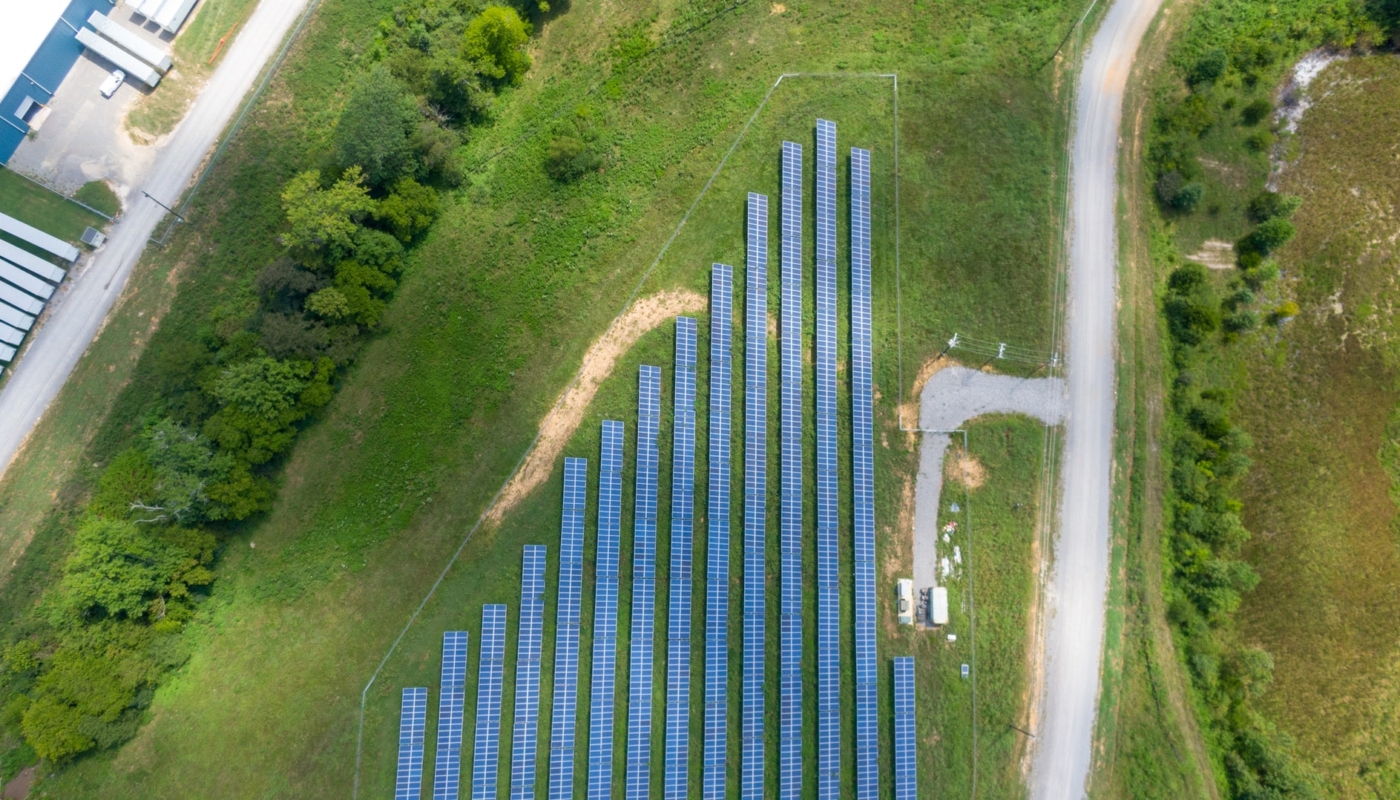Large-scale solar projects, like solar farms, have seen a rapid increase in popularity over the last few years. Solar developers across the country are eager to find suitable land to develop new solar farms, and landowners are well positioned to profit from this surge in large-scale solar projects. The growth of community solar has also increased developer demand for suitable parcels of land, as large solar panel arrays are required to facilitate community solar.
The scale of these solar farms and community solar gardens varies from project to project but, generally speaking, 6 to 7 acres are required for every megawatt (MW) of solar installed. So a 5 MW project, for example, would require somewhere in the region of 30 - 35 acres of suitable land. To house these projects, developers need to find landowners with sufficient acreage on a viable parcel of land.
The developer and the landowner will then enter into an agreement known as a solar land lease, wherein the solar developer pays the landowner for the use of their land for the solar installation. These leases are generally long-term commitments, so it’s important that a landowner is well informed about every aspect of the solar land leasing process before signing anything. Landowners should understand all terms of the solar land lease contract and the implications for their property. It’s certainly advisable to speak with both legal and taxation professionals before entering into any agreement.
Below, we’ve taken some key points from the SEIA Guide to Land Leases for Solar, giving landowners an overview of the process and a basic understanding of how it all works. To get a deeper understanding of solar land leasing, landowners should speak to an experienced developer like YSG Solar.
Site Visit
Once contact has been made between the developer and the landowner, this is the first step in the solar land leasing process. The site visit is necessary to determine whether or not the land is suitable for a solar project. Factors determining the viability of a solar farm/community solar project include:
- Amount of land available: Developers require a sufficient amount of land in order to build a solar project. Generally speaking, ten acres is the minimum to develop a solar project, although some developers may be willing to go as low as five acres, depending on the project in question.
- Obstructions on the property: If a piece of land has a lot of obstructions/debris which are difficult or expensive to remove, then a solar project may not be viable.
- Level of shading on the land: Similarly, if the obstructions on the property are causing a lot of shading and limiting the amount of annual sunlight the land receives, then solar developers may look elsewhere.
- Easements: In order to construct a project, easements may be necessary in order to allow the developer access to the leased land.
- Proximity to a substation/three-phase power line: In order to successfully interconnect the project, it’s important that the land isn’t too far from the grid. A good rule of thumb is to keep the project within one kilometre of existing distribution lines.
- Condition of the soil: As with a traditional agricultural farm, a solar farm requires quality terrain for optimal performance. To construct a solar farm, developers need clear, flat land with no major obstructions and minimal debris.
These are just some of the key factors that determine the suitability of a parcel of land for a solar project. For a more detailed explanation of what makes land suitable for a solar farm, check out our blog post here.
Lease Option
Following the initial site visit, the developer may determine that the land is suitable for a solar project. If this is the case, the developer may offer to lease the land. At this point, the developer may pursue a ‘lease option’ with the landowner. A lease option is typically an agreement which offers developers a 2 - 3 year timeframe in which to assemble a deal for the land lease and, ultimately, decide if they wish to lease the land for solar. Generally, during this 2 - 3 year period, the developer will make regular payments to the landowner as part of the lease option.
Be sure that the lease option clarifies:
- Who is responsible for paying taxes associated with the land
- What happens if the project never reaches completion
- Who is responsible for environmental clean-up following the conclusion of the solar land lease
It’s also important to remember that a lease option is not a guarantee that the developer will necessarily lease the land in the end.
Letter of Intent
A letter of intent (LOI) is an alternative to a lease option. It can be binding or nonbinding, and landowners are advised that they should speak with both legal and taxation professionals before agreeing to the LOI. A LOI outlines the proposed terms and conditions of a lease agreement, while also noting any issues that must be addressed ahead of the solar land lease agreement being signed.
Solar Land Lease
The solar land lease itself is the final piece of the puzzle in terms of the agreement between developer and landowner. Once the decision to lease the land has been made, and the developer and landowner have agreed to the final terms of the solar land lease—each having consulted with legal professionals—then the two parties sign the binding lease agreement. This is a hugely important part of the entire process, as the solar land lease outlines the rights of each party with regards to the leased land for the entire lifespan of the project and beyond.
Popular States for Solar Land Leases
Some of the most popular states for solar land leases, and the development of solar farms and other large-scale solar projects, include:
- New York
- Massachusetts
- Connecticut
- Vermont
- Maine
YSG Solar is keen to speak to landowners from all of the above states about potential solar land leases and project development. For further details on the solar land leasing process, you can download the full SEIA Guide to Land Leases for Solar at this link.
If you’ve got unused land and you’re interested in generating some extra revenue, then get in touch with YSG today. Send us an email, or call at 212.389.9215 and we will discuss the possibility of leasing your land for a solar project. We will discuss the specifics of your land and the potential income you could generate from a solar land lease.
YSG Solar is a project development vehicle responsible for commoditizing energy infrastructure projects. We work with long-term owners and operators to provide clean energy assets with stable, predictable cash flows. YSG's market focus is distributed generation and utility-scale projects located within North America.
Sources:
Featured Photo by Kelly Lacy from Pexels.

